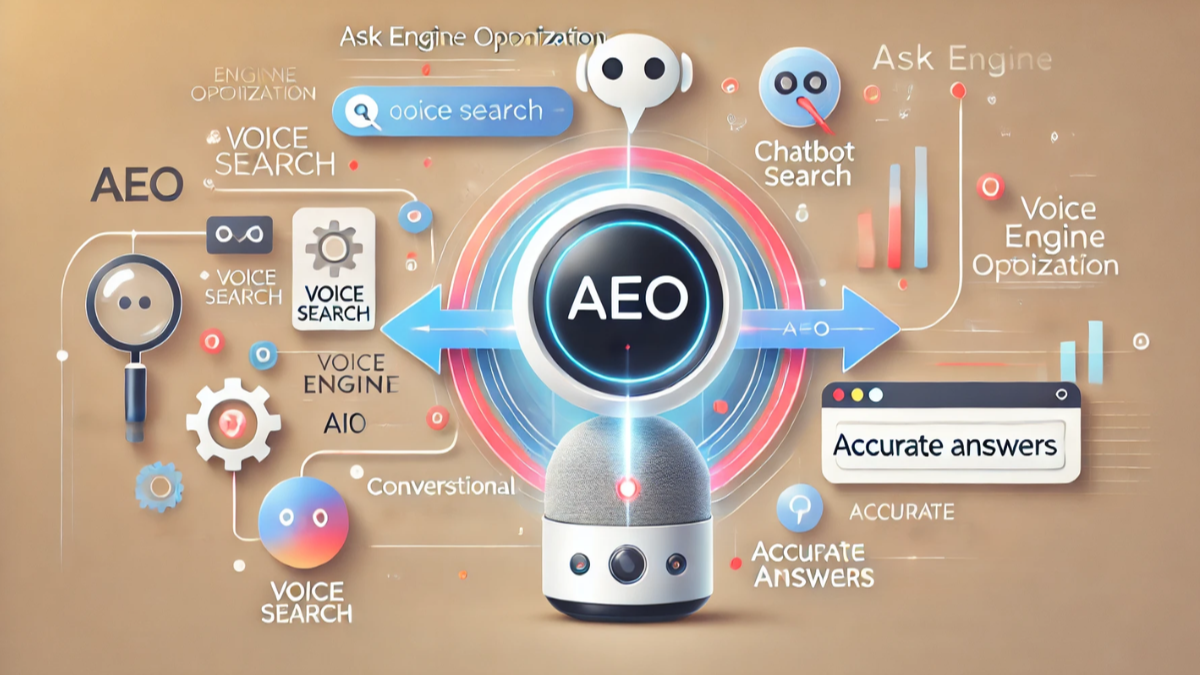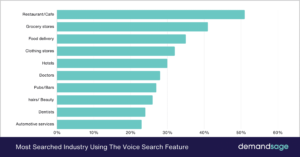
Ask Engine Optimization: Why You Need To Plan For It In 2025
As we edge closer to 2025, the digital marketing landscape is evolving at an unprecedented pace. One of the most significant shifts is the rise of Ask Engine Optimization (AEO), which prioritizes delivering direct answers to user queries rather than simply ranking websites by relevance. But how does this differ from traditional SEO, and why should businesses start planning for it now?
SEO vs. AEO: What’s the Difference?
Search Engine Optimization (SEO) has long been the foundation of digital marketing strategies. It focuses on improving a website’s visibility in search engine results pages (SERPs) by optimizing keywords, backlinks, and on-page elements. Examples of SEO strategies include keyword research tools like SEMrush or Ahrefs and backlink-building campaigns.
In contrast, Answer Engine Optimization (AEO) caters to answer engines like Google’s featured snippets, voice assistants (e.g., Siri, Alexa), and AI-driven tools that provide direct answers. AEO prioritizes structured data, conversational search queries, and instant solutions to user questions. For example, a brand can use schema markup to ensure its FAQs appear directly in Google search results.
While SEO aims to drive traffic to websites, AEO seeks to provide immediate value by answering questions directly within the search engine or answer engine. This shift demands a rethinking of how businesses approach content creation.
Why is AEO Critical for 2025?
- The Rise of AI-Driven Answer Engines: AI-powered tools are transforming the way users search for and consume information. Answer engines prioritize speed, accuracy, and relevance.
- For instance, Google’s featured snippets and knowledge panels have become prime real estate for businesses looking to establish authority.
- Voice Search Optimization: With voice search usage on the rise, conversational queries are becoming the norm, making AEO essential. Studies show that over 50% of searches are now voice-activated, emphasizing the need for natural language content.

- User Expectations: Modern users demand quick, accurate answers. AEO aligns with this need, enhancing user experience and satisfaction.
- Competitive Advantage: Early adoption of AEO strategies can position your business as a leader in your industry. Brands like Amazon and Microsoft have already embraced AEO by integrating voice assistants and direct answer mechanisms into their platforms.
Strategies to Plan for AEO
To stay ahead, businesses must develop a clear plan to integrate AEO into their content strategies. Here’s how:
- Utilize Structured Data Markup: Implement schema markup to help search engines understand your content. This enables your content to be displayed as featured snippets or in answer boxes. Tools like Google’s Structured Data Testing Tool can assist in validating your markup.
- Focus on Conversational Content: Optimize content to match conversational queries, especially for voice search. Use natural language and question-based headings. For example, instead of “Best shoes,” use “What are the best shoes for running?”
- Create FAQ Sections: Anticipate user questions and provide direct, concise answers. Organizing content in this way increases its chances of appearing in answer boxes. A company’s FAQ section can become a valuable asset when properly optimized for AEO.
- Optimize for Voice Search: Use long-tail keywords that mirror how people speak and ask questions. Tools like AnswerThePublic can help identify common voice search phrases.
- Invest in High-Quality Content: Prioritize creating content that provides accurate, trustworthy, and actionable answers. For instance, detailed guides or tutorials often perform well in answer engines.
- Leverage AI Tools: Use AI-driven analytics to identify trending queries and optimize content accordingly. Platforms like Jasper AI or ChatGPT can help generate conversational content efficiently.
- Focus on Conversational Language: Use natural, conversational tones that mirror how people speak during voice searches. Instead of writing formal sentences, aim for casual and engaging content.

- Develop Comprehensive FAQs
-Create dedicated FAQ pages that address common queries in your industry.
-Ensure each question is phrased naturally and followed by a detailed but concise answers - Optimize for Featured Snippets
-Featured snippets are concise boxes of information that appear at the top of Google’s SERPs. They are often used as the source for voice assistant responses.
-Format answers using bullet points, numbered lists, or direct paragraphs to increase the chances of being featured. - Use Location-Based Optimizations
local businesses, ensure location-specific keywords are part of the content. For example, “Where can I find the best pizza in New York?” should link directly to your business if applicable.
Types of AEO
- Featured Snippets: Short, direct answers displayed at the top of search results. For example, “How to bake a cake” might generate a snippet outlining the steps.
- Knowledge Panels: Detailed information boxes often displayed for brands or concepts, such as a company’s history or key statistics.
- Voice Search Results: Answers provided directly by voice assistants, often drawn from high-ranking AEO-optimized content.
- People Also Ask (PAA) Boxes: Related questions and answers displayed in search results, offering additional opportunities for visibility.
- Rich Results: Enhanced search results with additional visual or contextual elements, such as star ratings or images.
Optimizing Content for AEO
To optimize your content effectively:
- Use question-based titles and headings.
- Answer questions succinctly within the first 50-100 words.
- Incorporate high-quality visuals and videos where applicable.
- Regularly update and audit content to ensure accuracy and relevance.
- Test your content’s performance using tools like Google Search Console to identify areas for improvement.
How to Prepare for This Trend
- Stay Updated on Search Engine Guidelines: Regularly review updates from Google and other platforms to align with evolving AEO requirements.
- Train Your Team: Educate your content creators and SEO specialists on the principles of AEO.
- Invest in Analytics Tools: Use tools like SEMrush or Ahrefs to monitor trends and refine your strategy.
- Collaborate Across Teams: Ensure marketing, content, and technical teams work together to implement AEO effectively.
Conclusion
As search technology advances, Ask Engine Optimization (AEO) is becoming a crucial component of content strategy. By understanding its nuances and implementing AEO-focused strategies, businesses can stay competitive and meet the evolving demands of users in 2025 and beyond. With proper planning and execution, AEO can elevate your brand’s visibility and authority in the digital space.
FAQs
- What industries benefit the most from AEO?
Industries like e-commerce, healthcare, education, and technology can significantly benefit from AEO due to the high demand for immediate and accurate information in these fields. - How can small businesses implement AEO with limited resources?
Small businesses can start by using free tools for structured data, focusing on local SEO, and creating simple FAQ sections tailored to their audience. - What are the risks of ignoring AEO?
Ignoring AEO may result in reduced visibility in search results, missed opportunities to engage voice search users, and falling behind competitors who adopt AEO strategies. - Can AEO work alongside traditional SEO?
Yes, AEO complements SEO by enhancing content visibility and improving user engagement. Combining both strategies ensures comprehensive optimization for all types of search queries.



